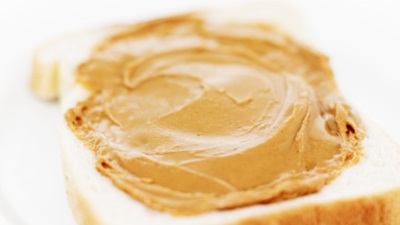
In today’s day and age, healthy eating is not so simple. The nutrition labels on products are often misleading or confusing and they’re rarely updated when new information about the recommended daily values becomes available. But one of the biggest problems is that the ingredients used in today’s mass food produced world are barely recognizable. Even if you buy something simple, like peanut butter, for example, there’s a ton of other ingredients like syrups, sugar, and sodium.
Why has healthy eating become so difficult? And how can we truly eat healthy foods, without getting a side order of sugar, salt, syrups, and artificial flavorings?
If healthy eating is your priority, then start by knowing which healthy foods you should be including in your diet and which ones you shouldn’t be eating. To start you off, here are five foods you must be aware of—because they’re really not healthy foods at all:
1. Mayonnaise: Oh, this family favorite doesn’t deserve to be on your list of healthy foods. To truly be classified as real mayonnaise, the spread must contain at least 65% vegetable oil. Unfortunately, today’s common brands often contain a mix of water, high fructose corn syrup, sugar, cornstarch, salt, flavors, as well as soybean oil, eggs, and mustard. It might taste yummy, but it’s not a good way to start your healthy eating path.
2. Cheese slices: They’re so convenient but these foods are not part of a healthy eating plan, because “cheese” is really not the appropriate word to describe this “food.” Many cheese slices are really just full of oil, fillers, and emulsifiers. Just because processed cheese slices aren’t healthy, doesn’t mean you have to drop the cheese altogether. Cheese is actually one of the healthy foods you should be eating—you just want to make sure you choose a healthy variety, like cottage cheese or feta.
3. Chocolate chip cookies, sans real chocolate: Have you ever taken a close look at the label on your favorite brand of chocolate chip cookies? You might want to double check that you’re eating chocolate chip cookies with real cocoa, and not chocolate-flavored cookies. The difference? To be called chocolate, the FDA maintains that real cocoa butter must be used to make the cookies. Cheaper varieties will instead substitute real cocoa butter for vegetable oil and partially hydrogenated palm kernel oil. Want to avoid this healthy eating lie? Make your own homemade cookies.
4. Peanut butter, hold the peanuts: I’m a fan of healthy eating, and I love peanut butter—but I make sure to buy the organic or natural variety and when I’m debating which peanut butter to buy, I always look at the ingredient list. There’s only one ingredient I want to see: peanuts. Anything else and it goes back on the shelf. Unfortunately, most well-known peanut butters really don’t contain many peanuts. You might even need to call it “peanut-flavored sugar oil” because that’s what you’re getting. If you want the real, authentic peanut taste, and you want to eat healthy foods, then read the ingredient list and buy peanut butter that doesn’t contain anything other than peanuts.
5. Chocolate “milk:” There’s likely no milk in your chocolate milk. This drink is definitely not to be added to your healthy eating list. If you pride yourself on getting your daily dose of calcium from chocolate milk, start looking elsewhere. In fact, one major brand of chocolate milk has a host of ingredients—including high fructose corn syrup, sugar, corn syrup solids, oils, salt, gums, and other ones we can’t pronounce—but no real liquid milk. Like the taste of chocolate milk? Buy some dark cocoa and add some to your milk instead.
Eating healthy foods can definitely be a challenge—but when you read labels carefully, the healthy eating mission becomes much easier. Next time you’re out grocery shopping, make sure you’re buying real healthy foods, and nothing else.
Source:
Oaklander, M., “Fake Foods You Are Eating,” Yahoo! Health web site, August 29, 2013; http://health.yahoo.net/articles/nutrition/photos/fake-foods-you-are-eating#1, last accessed August 30, 2013.












